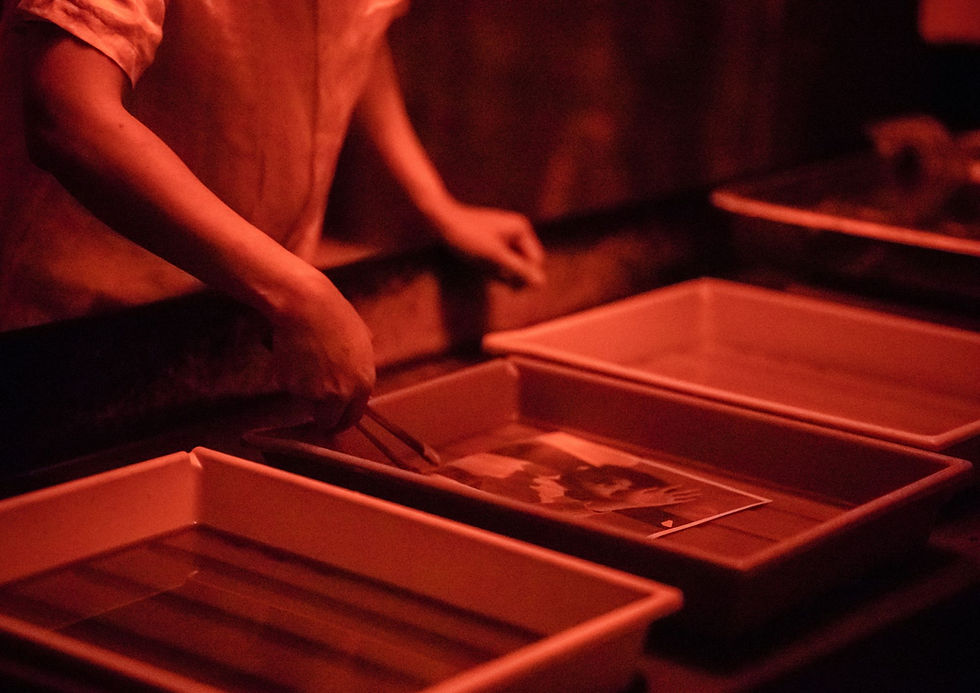Disposing of Darkroom Chemicals
- Alternative Processes

- Apr 6, 2024
- 3 min read
Today, we're turning the spotlight on a crucial but often under-discussed aspect of our practice: responsibly disposing of darkroom chemicals. It's an integral part of our commitment as photographers to balance our passion for capturing beauty with our duty to protect it.
Whether you're a hobbyist or a professional, properly disposing of darkroom chemicals is essential for environmental safety and compliance with regulations. Here's a streamlined guide combining reliable information from multiple sources to ensure you manage your photographic waste responsibly.

For Hobbyists:
At Home:
Developer and Stop Bath: Many suppliers say you can safely dispose of these at home. Dilute them with water, mix them together to neutralize, and then flush down the toilet. Ensure not to dispose of them in a septic tank, as they can harm the bacteria that keep your tank functioning. Treatment Centers:
Fixer: Due to its high silver content, fixer should be taken to a waste treatment center. Alternatively, at home, place a steel wool pad in a bucket with the fixer to collect silver over a week. After removing the silver sludge, dilute the remaining solution and flush it. That said, it's always best to take it to a hazardous waste facility for disposal.
Safe Disposal through Waste Services
Relying on professional hazardous waste disposal services is often the safest way to manage darkroom chemicals. Hazardous waste services have the expertise and infrastructure to handle these chemicals safely. It's essential to research local options, as services vary—some offer home pick-up while others have designated drop-off points. In the US, locate your nearest disposal site by searching "Environmental Protection Agency household hazardous waste" followed by your state's name. These facilities make disposing of darkroom chemicals safe and straightforward. A personal note: Over the years, I've reached out to various waste services in the different places I've lived. My experience has been that many don't prioritize the collection of chemical waste in small amounts, as their main clientele tends to be large corporations and manufacturing facilities. However some services will accept silver if you personally deliver it. This, of course, varies by location.

Disposal of Color Chemistry:
NO drains: Do not to pour color chemistry down the drain. Instead, collect spent chemicals in containers like milk jugs and bring them to hazardous waste disposal facilities or inquire at local photo labs for disposal options.
Recycling Opportunities: Beyond Disposal
Some darkroom chemicals, like fixers, offer recycling opportunities. Fixers contain silver, which can be recovered and recycled. Silver recovery units, while sometimes costly, are an option. They not only aid in safe disposal but also allow for the recovery of valuable silver, which can be sold or reused.

Case Study: Artistic Recycling
As an example of creative recycling, artist Charlotte E Padgham's work in making jewelry from exhausted chemicals is an innovative approach. It demonstrates how art and environmental responsibility can intersect, offering a sustainable and artistic way to handle chemical waste. This example can inspire photographers to think creatively about their waste products, transforming them from mere byproducts into something of value.

Responsibly disposing of darkroom chemicals is a critical aspect of sustainable photography. By understanding the environmental impact, utilizing professional disposal services, and embracing recycling opportunities, photographers can ensure that their passion for photography doesn't come at the expense of the environment. This approach reflects a deeper commitment to a sustainable and responsible photographic practice.




For C41 chems, does everything need keeping separate for disposal?